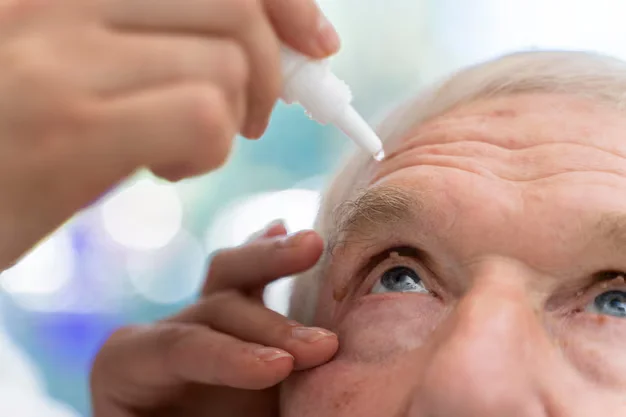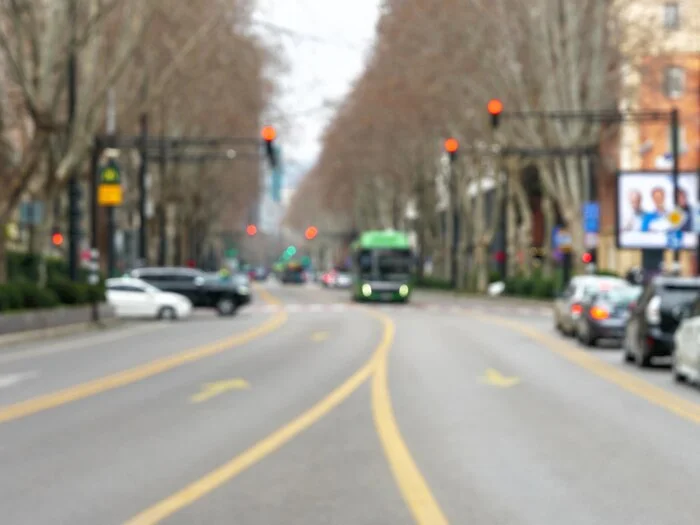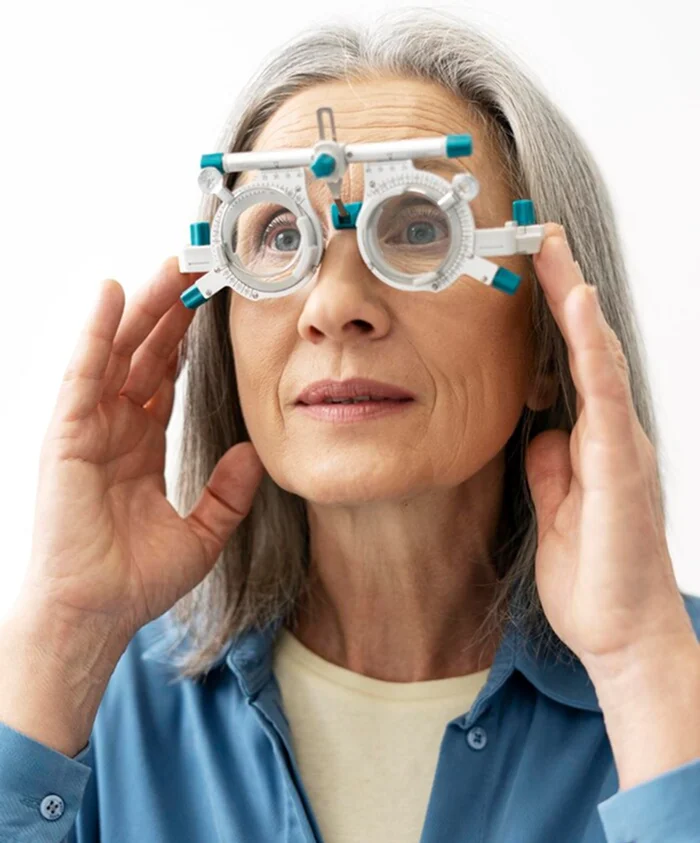Driving is a symbol of independence, but safe driving depends heavily on clear vision. As we age, natural changes in eyesight make it more challenging to see clearly, especially in certain conditions. Many older adults report experiencing blurry vision while driving, glare from headlights, or trouble reading road signs at night.
These challenges are not just inconveniences; they are often the result of aging vision changes. Understanding how eyesight changes with age, recognizing early signs of aging eyes, and staying proactive with care can help seniors maintain confidence and safety behind the wheel.

The Relationship Between Vision and Driving
Vision plays a vital role in safe driving; a driver uses their vision to measure distance, detect hazards, and respond appropriately. However, near & far focusing, clearing glare, and adapting to light are closely connected with eyesight and driving.
Usually, vision-related skills decline as a person ages. People with "normal" results on vision-sensitivity tests may report that they don't see adequately for night driving or are delayed in reading power line signs. Therefore, eye care professionals consistently monitor average eyesight by age via routine eye exams to track subclinical declines.
Typical Vision Changes Associated with Aging That Affect Driving
1. Blurry Vision While Driving
Blurry vision while driving is one of the most common complaints from older drivers. Blurry vision while driving sometimes might relate to cataracts, refractive errors, or dry eye symptoms. If you find that you experience blurry vision while driving regularly, it would be wise to book an eye exam to rule out problems. Different options exist to restore clarity. Good eye care can often lead to a clearer vision with corrective lenses, cataract surgery, and dry eye treatment.
2. Increased Difficulty Driving at Night
Vision problems while driving at night are common among seniors. Distinguishing headlight glare, halos around lights and slower adjustments from bright to dark all show the classics signs of aging eyes. If you reflect on these vision changes, know that these happen naturally over time; eyes lens gradually loses flexibility and pupil size shrinks limiting the perspiration of light.
3. Difficulty Reading Road Signs
One of the normal changes with eyesight is that objects at a distance are hard to identify; those objects often include road signs, which become harder to focus on. Even with glasses, some may find themselves squinting and straining to read street names or speed limits. These changes sometimes signify that you need to update your prescription or just simply that you are beginning to develop cataracts.

4. Increased Sensitivity to Glare
Glare can be extremely bothersome when driving, whether it be from wet roads, sunlight, or headlights. This sensitivity to glare is an age-related change in vision due to age-related vision changes, such as cataracts, which scatter incoming light. Anti-glare lenses or polarized sunglasses can reduce discomfort because they decrease glare during day vision driving conditions.
5. Slower Adaptation to Light Changes
Older adults take longer to adapt to changes in light, such as moving from bright sunlight into a dark parking garage or even from dark roads to a lit intersection. These eyesight changes occur because the muscles that move the eyes are responding more slowly to color and brightness changes, which delay adaptation, and in turn delaying reaction times.

Understanding Average Eyesight by Age
Eye doctors often talk about average eyesight by age to explain what is typical versus what may need medical attention. For example:
- In your 40s, presbyopia (difficulty seeing up close) is common.
- In your 50s, cataracts may begin to form.
- In your 60s and beyond, aging vision changes such as macular degeneration or glaucoma are more frequent.
Knowing these milestones helps drivers understand when to expect changes and how to adapt.
Recognizing Signs of Aging Eyes
Many seniors ignore early symptoms, assuming they are just part of getting older. But subtle signs of aging eyes can put drivers at risk, such as:
- Frequent squinting
- Needing brighter light to see clearly
- Headaches or eye strain during long drives
- Struggling with depth perception
- Avoiding night driving altogether
If these symptoms sound familiar, they may point to underlying eye-sight changes that require more attention.

8 Ways to Protect Against Losing Your Vision When Driving
We may not be able to stop the aging process, but there are ways to manage some of its effects. Here are some practical methods to prevent blurry vision while driving and other age-related issues:
Eye Exams: Regular eye exams are necessary because they will monitor how aging affects your vision, and you will get updated looking prescriptions.
Corrective Lenses: Purchasing corrective lenses with anti-reflective lenses will improve your vision on the road and when the sun goes down.
UV-Preventing Sunglasses: Getting the right glasses will prevent glare from the sun and diminish further damage from the sun.
Clean Windshields and Lenses: Make sure your windshield and glasses are clean. Even small smudges can increase glare.
Healthy Lifestyle: A diet rich in leafy-green vegetables, omega-3s, and antioxidants will help with eye health.
Seniors should be sure to stay engaged and as independent as possible for as long as they can. By practicing these eight points they can avoid blurry vision while driving up to a great extent.
The role of eye care professionals
At Elite Eye Care, we are committed to helping older adults protect their vision, extend safe driving years and avoid blurry vision while driving. If you’ve noticed changes in your eyesight and driving, it may be time to schedule an eye exam and explore solutions tailored to your needs.
